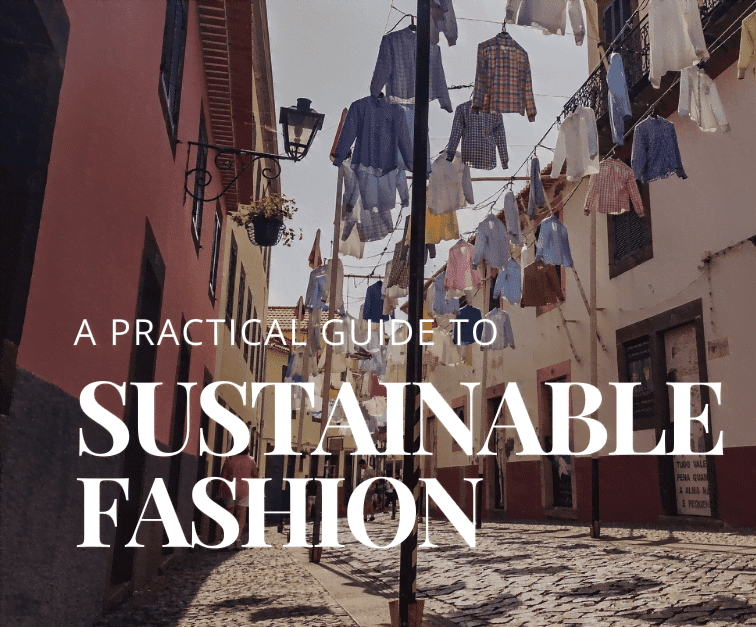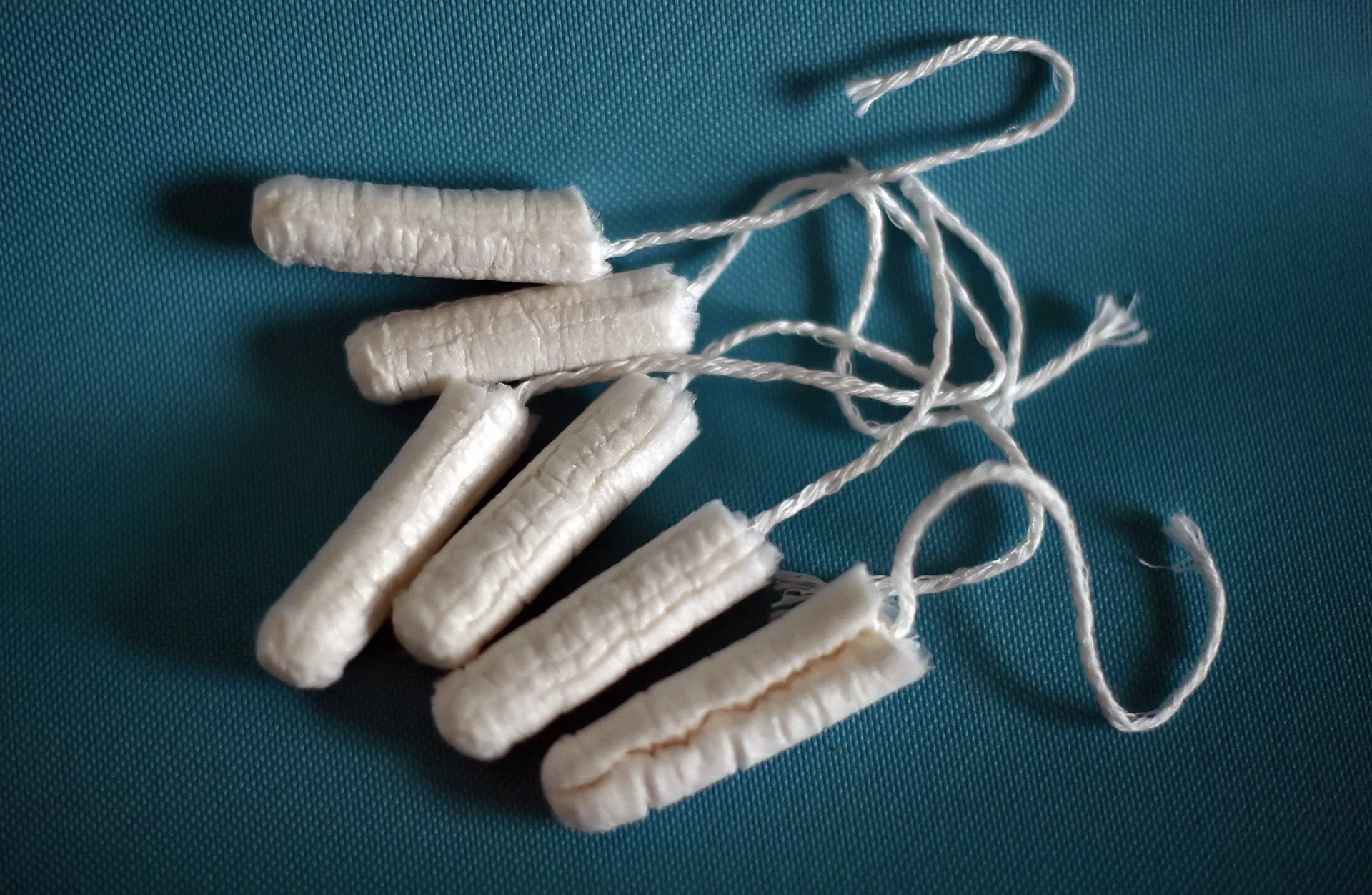Last Updated on September 15, 2024 by Our Editors
Have you ever worn nylon or spotted polyester in your closet and wondered where it comes from or how it’s made? Well, meet polyamide—one of the unsung heroes in the world of fabrics. You’ve probably encountered it more times than you think!
Polyamide is everywhere. Keep reading and you’ll find some polyamide examples. Whether it’s in your sleek workout leggings, that wind-resistant jacket you take on hikes, or even the tights you wear to the office, polyamide is woven into the fabric of our lives—literally. But what is polyamide? What exactly makes this material so special? Is polyamide fabric good or bad? Is polyamide toxic? And more importantly, should we be paying closer attention to it, especially in today’s eco-conscious world?
Unlock Your Savings with Exclusive Offer Coupons
Save big while shopping for sustainable products! Grab your exclusive coupons today!

As conversations around sustainability continue to grow, knowing what’s in the clothes we wear has never been more important. We’re more aware of the environmental footprint of the things we consume, and fabrics are no exception. While polyamide brings a lot of practical benefits—strength, flexibility, and durability—there are pressing questions about its environmental impact and how it affects our health. So, what is polyamide in chemistry, and is it really as harmless as it seems?
So, should polyamide have a place in your wardrobe? Is it a good choice for both you and the planet? Plus, is polyamide fabric good or bad? Let’s dive in and find out the truth behind this popular fabric. Whether you’re a fashion enthusiast or simply looking to make more eco-conscious choices, understanding what is polyamide will help you navigate the next steps for a more mindful closet. Isn’t that what we all want?
The Science Behind Polyamide: What Is It Made Of?
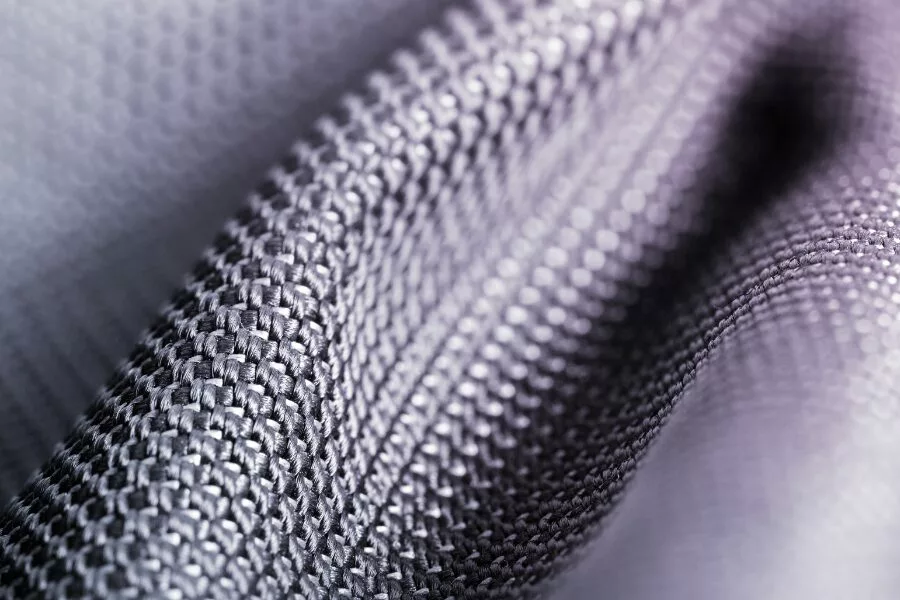
So, what is polyamide in chemistry? And, is polyamide nylon? Polyamide is a polymer, but what does that really mean in everyday terms? Simply put, it’s a type of fabric made up of repeating molecular units linked by amide bonds. These bonds form the backbone of polyamide and give the fabric its incredible strength and elasticity. Polyamides occur both naturally and artificially, and this is where things get interesting.
Natural polyamides include proteins found in wool and silk, while synthetic polyamides are created in labs. Nylon, a common form of synthetic polyamide, was first developed in the 1930s and became famous for its use in everything from stockings to parachutes during World War II. The same properties that made it ideal for such high-stress uses—like durability and flexibility—make it a popular choice today in activewear and outdoor gear.
But let’s not forget: the chemistry behind polyamide also makes it resistant to wear and tear, which is why your nylon clothes seem to last forever. On the flip side, this durability raises some concerns about how long it takes for polyamide products to break down in landfills. If you’re assessing polyamide vs polyester, you should know that they’re quite different. Now that you know what is polyamide, let’s find out how it’s made.
How Is Polyamide Made?
As we look into what is polyamide fabric and is polyamide nylon, let’s find out how it’s made to really assess is polyamide toxic. Polyamide, commonly known as nylon, is made through a chemical process involving the polymerization of specific monomers. Here’s a simplified overview of how polyamide is produced:
1. Raw Materials
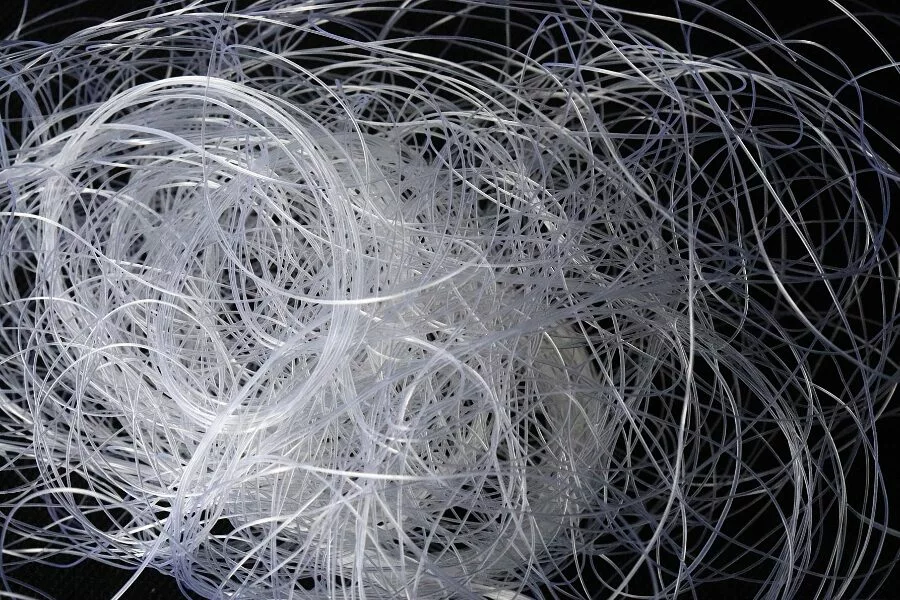
Monomers: The primary raw materials for polyamide production are diamines and dicarboxylic acids. For instance, Nylon 6,6 is made from hexamethylenediamine and adipic acid, while Nylon 6 is produced from caprolactam.
2. Polymerization Process
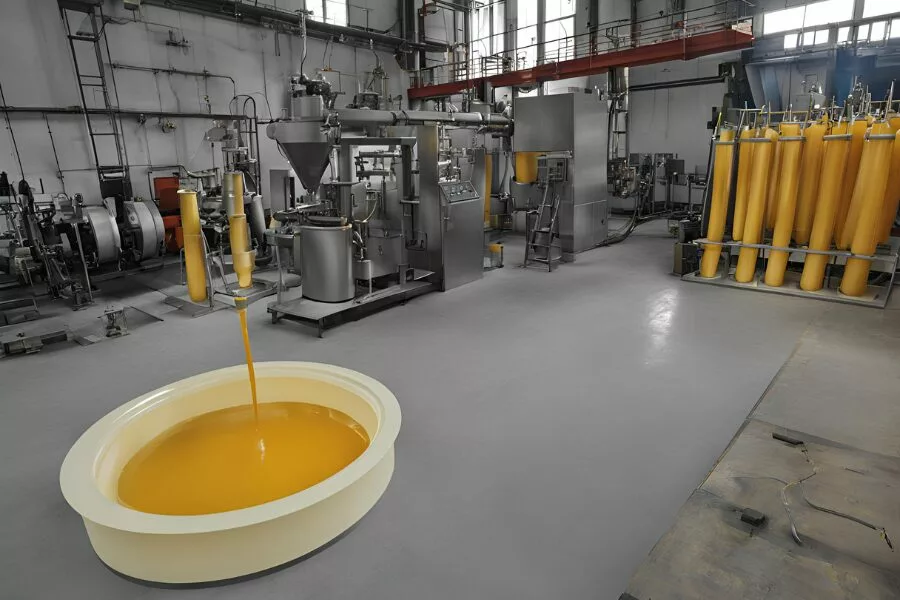
Condensation Polymerization: For many polyamides like Nylon 6,6, the process involves condensation polymerization. Diamines and dicarboxylic acids react to form long chains of polyamide, releasing water as a byproduct.
Example: Hexamethylenediamine and adipic acid react to form Nylon 6,6 with the release of water.
Ring-Opening Polymerization: For Nylon 6, caprolactam undergoes ring-opening polymerization, where the caprolactam ring opens up and forms long chains of polyamide.
3. Forming the Polymer
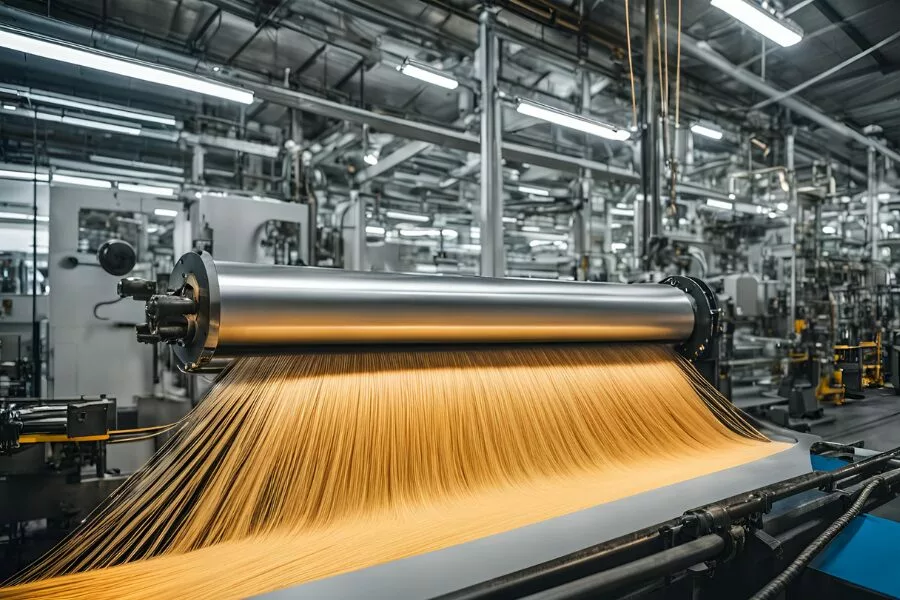
Melt Polymerization: The resulting polyamide is often in the form of a molten polymer. This molten polyamide can be extruded through spinnerets to form fibers or shaped into other forms.
Solid-State Polymerization: Sometimes, additional polymerization in the solid state is used to enhance the polymer’s properties, such as strength and durability.
4. Processing the Polyamide
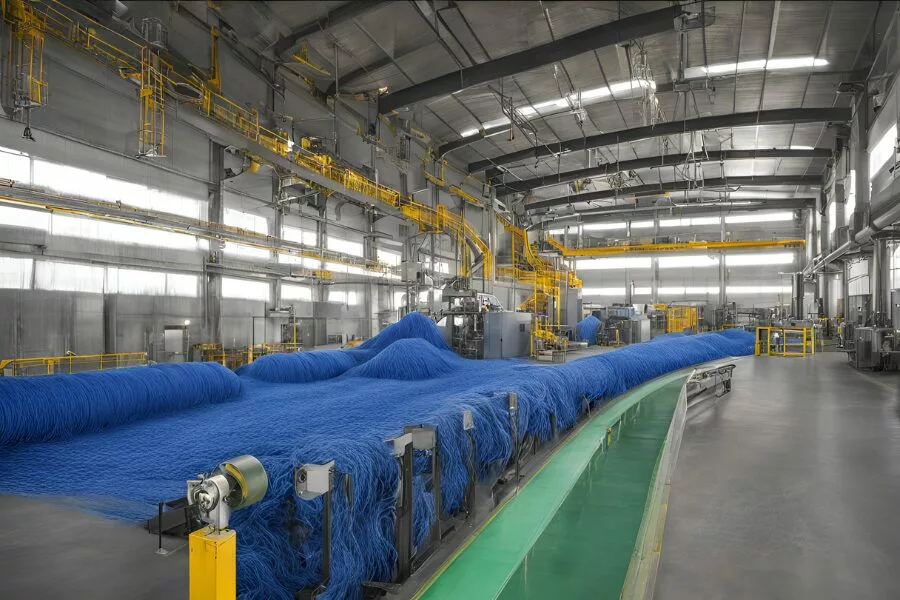
Fiber Formation: For textiles, the molten polyamide is extruded into fibers through spinnerets. These fibers are then spun into yarns, which can be woven or knitted into fabrics.
Plastic Production: Polyamide can also be molded into various plastic products through injection molding or extrusion processes. So, is polyamide plastic? It can be!
5. Finishing
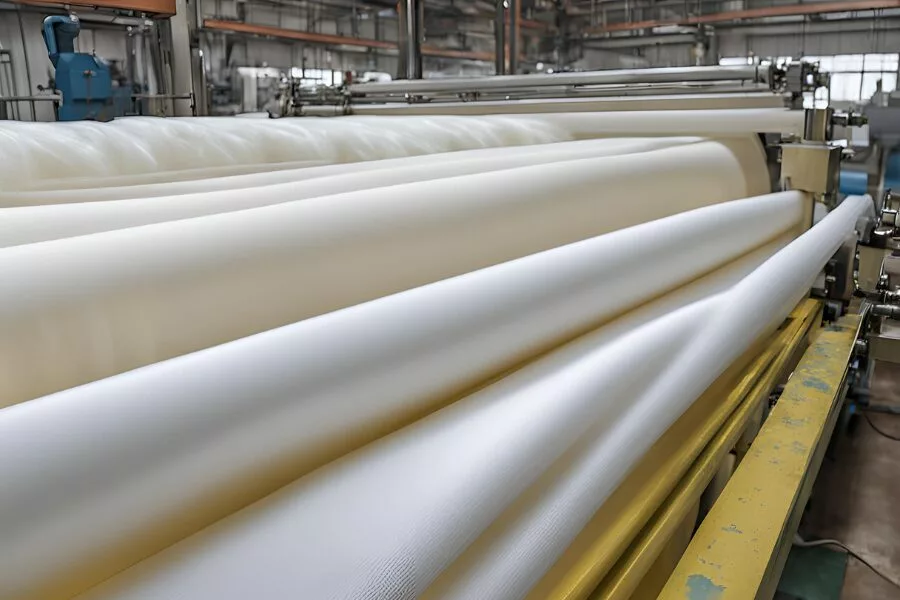
Textile Finishing: For fabrics, polyamide fibers are dyed, treated for specific properties (such as water resistance or flame retardance), and finished into textiles.
Plastic Finishing: For plastic products, polyamide may be further processed or treated to enhance its properties, like adding fillers or adjusting its flexibility.
6. Recycling
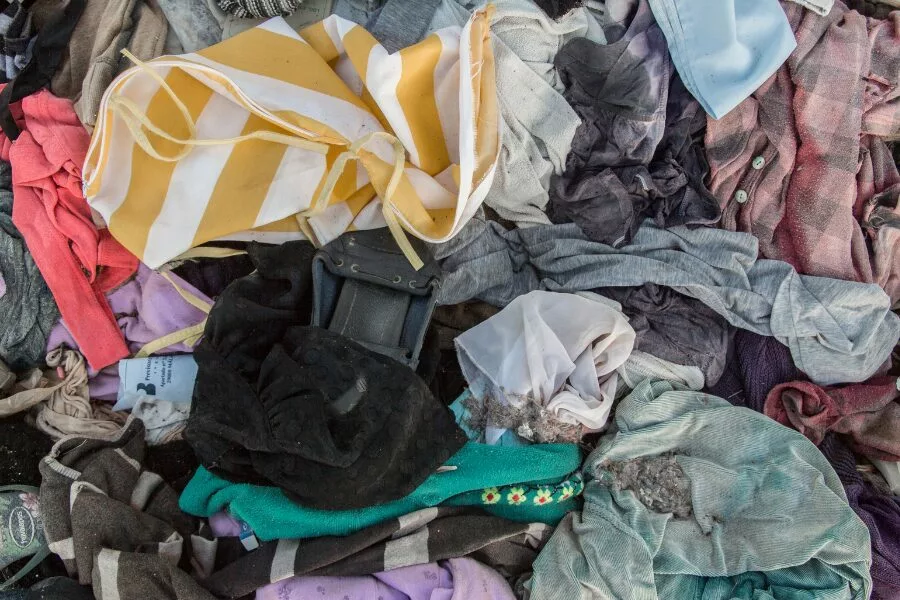
Recycling Process: Used polyamide products can be collected, cleaned, and broken down into their monomer components or directly reprocessed into new polyamide fibers or products. This process helps reduce environmental impact by reusing existing materials.
So, what is polyamide fabric and how is it produced? Is polyamide nylon after all? In short, polyamide is produced through chemical reactions that create long polymer chains from monomers. The production process can vary based on the specific type of polyamide and its intended use. Now that we know what is polyamide fabric, or nylon, and how it’s made, let’s see if this material can work for us or not.
Is Polyamide Fabric Good or Bad for Your Skin?

Now, is polyamide toxic? In fashion, when it comes to comfort and performance, polyamide can be a mixed bag. On one hand, polyamide fabrics are lightweight, strong, and resistant to moisture, making them ideal for sportswear. That sleek, stretchy feel of your go-to yoga pants? Chances are, there’s polyamide involved. Its moisture-wicking properties also make it great for gym clothes, as it helps keep sweat at bay.
However, not everyone’s skin reacts well to polyamide. Some people may experience mild irritation, especially if the fabric traps heat and moisture. Imagine slipping into a pair of leggings that don’t breathe well during a hot yoga session—it’s not exactly a pleasant experience.
The good news is, you don’t have to give up on polyamide entirely if you find it irritating. A simple tip? Look for polyamide blends mixed with natural fibers like cotton or bamboo. These blends help reduce irritation while maintaining the fabric’s durability.
Polyamide vs Polyester: The Fabric Showdown

When comparing polyamide vs polyester, another synthetic fabric, things get competitive. Both fabrics have similar properties—they’re lightweight, durable, and moisture-resistant—but there are key differences that could affect your wardrobe choices.
Polyamide tends to be softer and more comfortable, which is why it’s often used in high-performance clothing, especially where flexibility and movement are important. Polyester, on the other hand, is known for being slightly more water-resistant and less prone to wrinkling.
But what about sustainability? Polyamide has a lower melting point, meaning it requires less energy to produce. However, when you compare polyamide vs polyester, both fabrics face similar environmental challenges: they’re derived from petroleum and can contribute to microplastic pollution when washed. The real question is, which one fits your needs best while keeping the planet in mind? And, is polyamide plastic? Considering how they contribute to microplastic pollution, they’re no different.
Is Polyamide Sustainable? Understanding Its Environmental Impact

Is polyamide plastic? Here’s where things get tricky. Polyamide has undeniable benefits in terms of durability and performance, but its environmental impact is a concern. One of the biggest issues? Microplastics. When polyamide fabrics are washed, tiny plastic particles can break off and enter waterways, eventually contributing to ocean pollution.
Moreover, because polyamide is synthetic, it’s not biodegradable. A nylon jacket, one of many polyamide examples, could take hundreds of years to decompose in a landfill. The environmental cost doesn’t stop there—producing polyamide fabrics relies heavily on fossil fuels, which is another blow to sustainability.
However, there’s a silver lining. Brands are now turning to recycled polyamide, which reduces the need for virgin plastic and gives a second life to materials that would otherwise end up as waste. By choosing products made from recycled polyamide, you’re supporting a more sustainable fashion industry.
Polyamide in Everyday Life: From Fashion to Function
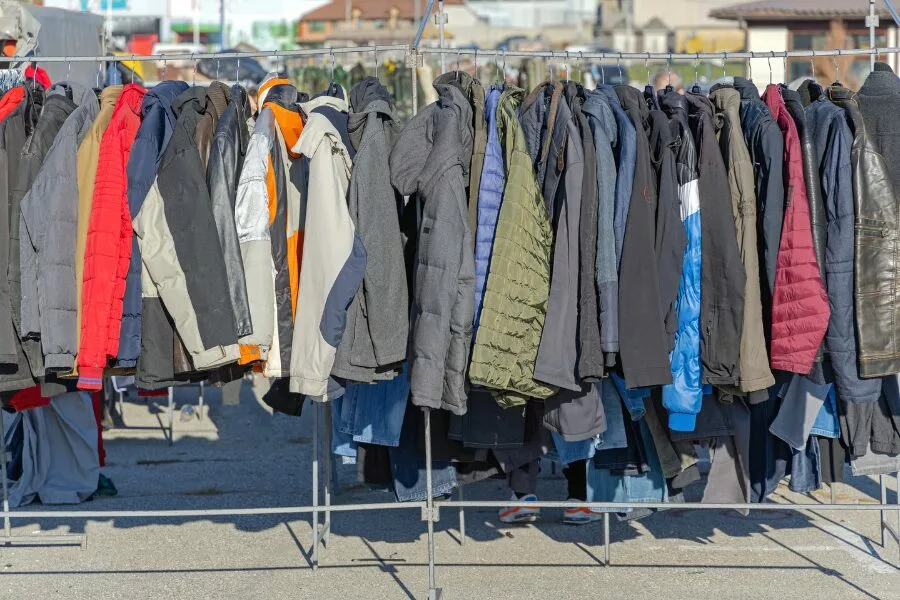
Did you know that during World War II, women fashioned dresses out of surplus nylon parachutes? Polyamide’s incredible strength and adaptability made it a sought-after fabric, even in the fashion world. This historical anecdote highlights the fabric’s versatility and lasting appeal—it’s a material that has truly stood the test of time.
So, what is polyamide after all? Well, polyamide, also known as nylon, goes beyond being just another fashion staple. This versatile synthetic fiber is found in a wide range of everyday items beyond your wardrobe. Think about your daily routine: the bristles of your toothbrush, the fibers in your carpet, and even the material of parachutes are often made from polyamide.
Its combination of strength, durability, and flexibility makes it a go-to material in multiple industries—from home goods to aviation and beyond. Its resistance to wear and tear, along with its lightweight properties, explains why polyamide is such a popular material for products that need to withstand the rigors of everyday life.
So, what is polyamide and can it be environmentally friendly? Not really. So, next time you’re shopping for household items or clothes, check the labels for recycled polyamide products. Choosing items made from recycled polyamide is a small but meaningful step that can help reduce waste and support the circular economy.
Should You Wear Polyamide? Final Thoughts

So, what is polyamide and should you really wear it? Is polyamide fabric good or bad? Polyamide offers numerous benefits, particularly in terms of performance. It’s highly durable, flexible, moisture-wicking, and lightweight, making it ideal for activewear, outerwear, and even everyday fashion. However, like any synthetic material, polyamide has its drawbacks. Chief among these is its environmental impact. Polyamide production involves petrochemicals, which can contribute to pollution, and the fabric itself takes a long time to break down when discarded.
When shopping for clothes made from polyamide, consider opting for recycled versions or blends that include natural fibers. By making more conscious fashion choices, you can help reduce your environmental footprint while still enjoying the benefits of this functional fabric.
So, are you ready to incorporate polyamide into your wardrobe in a more sustainable way? By choosing recycled options or garments that are responsibly sourced, you can enjoy the durability and comfort of polyamide without the guilt.
Making Eco-Conscious Choices with Polyamide
Polyamide is everywhere—whether it’s in your favorite workout gear or the toothbrush you use every day. While its practicality is undeniable, we can’t ignore its environmental footprint. Now that we know what is polyamide in chemistry, as consumers, we have the power to rethink our choices and opt for more eco-friendly alternatives. Whether you’re buying a new dress or replacing household items, keep sustainability in mind by looking for products made from recycled or responsibly sourced materials.
At Ecowiser, sustainability is more than just a trend—it’s a commitment. We are dedicated to incorporating recycled polyamide into our collections, aiming to reduce our environmental impact while offering stylish, high-performance garments. Together, we can make a difference, one fabric at a time.
Want to read more like this?
Get similar stories and a free sustainability checklist delivered to your inbox.

Like our content?
Get similar stories and a free sustainability checklist delivered to your inbox.

Frequently Asked Questions
What is polyamide in chemistry and is polyamide plastic?
Polyamide, commonly known as nylon, is a synthetic polymer made through chemical reactions involving diamines and dicarboxylic acids or caprolactam. It is widely used in textiles for its strength and durability, as well as in various plastic applications like automotive parts and industrial components. Its versatility makes it a popular material in many industries.
Is polyamide a plastic or is polyamide nylon?
Yes, polyamide is a type of synthetic plastic. It is also known as nylon. It can be found in both textile fibers and solid plastic products. In textiles, it’s used to make durable, flexible fabrics. In plastics, it’s used in items like automotive parts and machinery due to its strength and resistance to wear.
Is polyamide bad for skin?
Polyamide is generally considered safe for most people. It is widely used in clothing and other textiles without causing problems for the majority of users. However, some individuals with sensitive skin may experience irritation or allergic reactions. If you have sensitive skin, it’s a good idea to test the fabric or opt for hypoallergenic options.
Is polyamide toxic for the environment?
Polyamide’s environmental impact includes reliance on petrochemicals and non-biodegradability. The production process can lead to pollution, and the material does not break down easily in landfills. To lessen its impact, consider choosing products made from recycled polyamide or supporting brands that focus on sustainability and eco-friendly practices.
What are some polyamide examples?
Materials like Nylon, Kevlar, and Nomex are a few polyamide examples. These materials are widely used in textiles, high-performance gear, and industrial applications.


